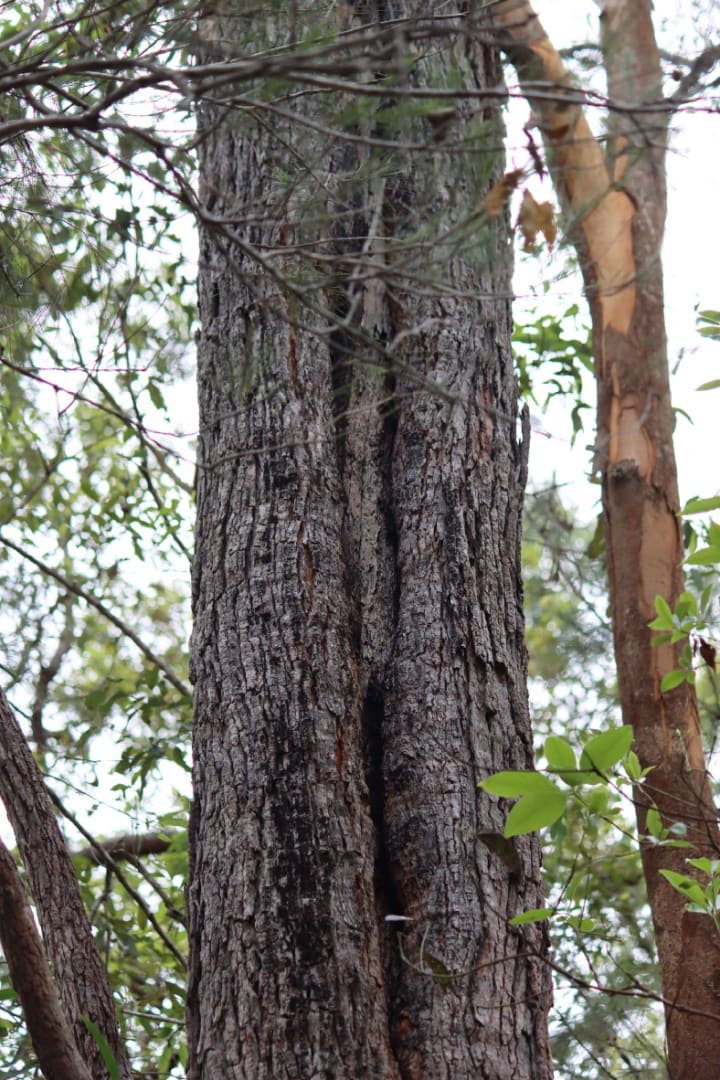How Trees can help you Love what you see in the Mirror
Why society needs to reverse its perspective on beauty and aging

If you see wrinkles and blemishes and lost youth when you look in the mirror, this story is for you, and for the society you live in.
Think of all the inspiring trees that you've seen in your lifetime in person or in photographs.
Now estimate the average age of all the trees that spring to mind.
I am willing to bet that the trees that you thought of are at least 50 years old on average, probably older.
When we see an old tree, we don't think "Yuck! That tree is so old! Look at the knots and fissures in the bark! Look at the twisted branches and old hollows."
We think, "Wow! That tree is old! It is a survivor. It's so beautiful! It has endured! What has that tree seen in its lifetime?"
Okay, so some people don't have those thoughts but most people, in my experience, do.
What is it about society that encourages us to see age in humans as undesirable?
It's not so long ago that age meant wisdom and experience and endurance.
Here are three lessons that trees tell us about beauty and experience.

Lesson One: Giving leaves scars
When a tree gives heartwood to a termite colony or a fungus, refuge and food to the koala or possum, a whole world to a stick insect, bark or wood to craft and shelter, it is left with scars and blemishes. These scars and blemishes are the termite trails, the scratches, the holey leaves, knots and fissures and hollows. These scars and blemishes are signs of giving and generosity and connection to the cycles of life and death.
When you look in the mirror, look for signs of giving.

When you smile and give joy to another, you form laugh lines and wrinkles around your eyes.
When you give time to help solve the woes of others, you crinkle your forehead and create lines of care.
When you lift things for others or tax yourself physically, you wear away your cartilage and get aches and pains for your trouble.
The bags under your eyes are signs that you care about your world and you've been giving to children or giving thought to problems that you want to solve.
These are not cause for regret but proof of what you have given to the world! They show your connection to the cycles of life and death. They are the branches and hollows that have supported others.

Lesson Two: Surviving in a harsh world only makes you more magical.
Trees with knots and fissures and hollows are celebrated by naturalists the world over. They generate awe and fill the landscape they inhabit. And yet, those knots and fissures and hollows are old wounds. They are born from pain and experience.
When you look in the mirror, reflect on all the things that you have overcome and all the memories your scars give you.

That scar on my lip and the blemish on my tooth are all that is left of a horrible bicycle accident I had when I was 12 years old.
That scar on my hand is from when I was throwing a stick for my dog and she jumped up flipping it back and tearing a big chunk of skin out of my hand.
That scar on my lower stomach, that huge scar, is the result of almost dying (twice!) in childbirth.
That "v" of sun-damaged skin under my neck that makes me grimace in certain clothes is representative of days in the sun and living in some of the most beautiful places in the world and being too silly to prioritise sunscreen.

Lesson Three: What goes up, must come down
As a tree slowly succumbs, its decline is evident in limbs falling and leaves scattering and a final crashing end one day. The tree goes on until that day comes. It could be days, weeks, years away… no one knows. Every tree succumbs in its own way.
When you look in the mirror, reflect on the uncertainty of time and how it goes both ways. You may have little but you may have a lot!

Final Thoughts
It's not the saplings in their youth, inexperience and fragile beauty that spark thoughts of magic. The saplings are lovely, but their future is uncertain, they need so much more from everyone and everything around it. Old trees are self-sufficient, they have already survived, they have seen and experienced life. They are fodder for the imagination.

Have you ever read Magic Kingdom For Sale, Sold by Terry Brooks? What about The Faraway Tree by Enid Blyton? Alice in Wonderland by Lewis Carroll? The Lord of the Rings by J.R.R. Tolkien?
All those stories are fueled by fantastic encounters with old trees.
All my life I have been inspired by fantastic encounters with my elders. That's not to say I haven't been inspired by young people, I have! The inspiration from my elders is softer, gentler, but ultimately more powerful. It's like they offer not just ideas but motivation.
When you look in the mirror, reflect on what you see, not in terms of youth and perfection, but in terms of giving and living and experiencing life. Odds on, that's what the people around you see and if they don't, do you want to elevate their influence on you? I know I don't.
This story was originally published on Medium.com
About the Creator
Jane Grows Garden Rooms
Jane lives in Australia. She's trying to create a comfortable home for the birds, the bees and the rest of her family. Contributions to Vocal indulge Jane's lifelong passion for writing, waxing lyrical about things that matter in her world.






Comments
There are no comments for this story
Be the first to respond and start the conversation.